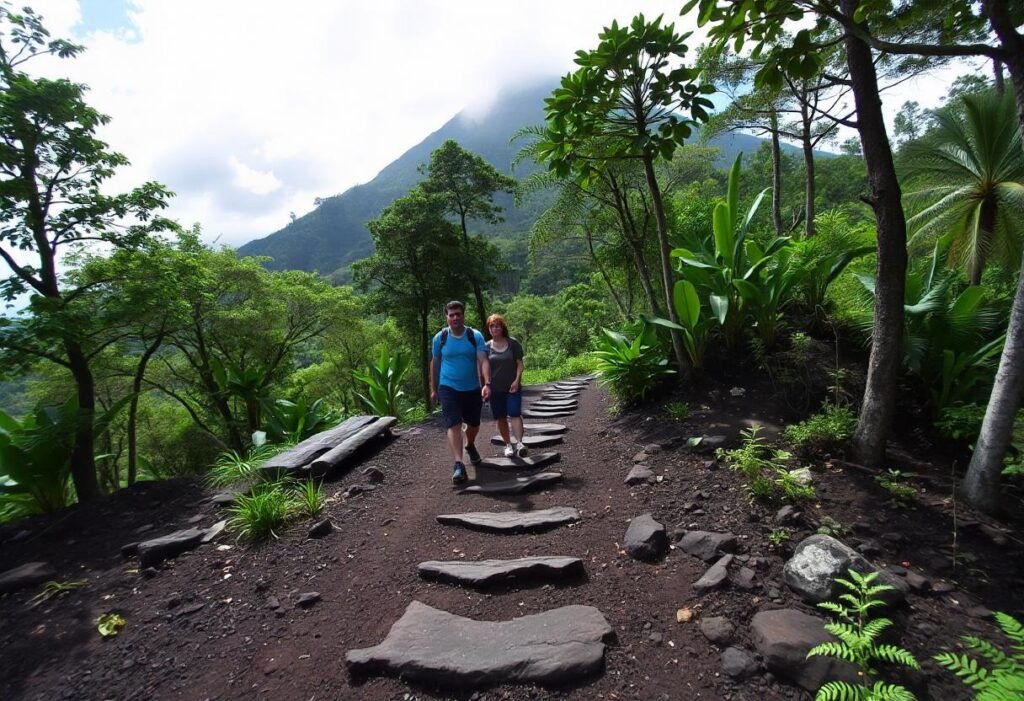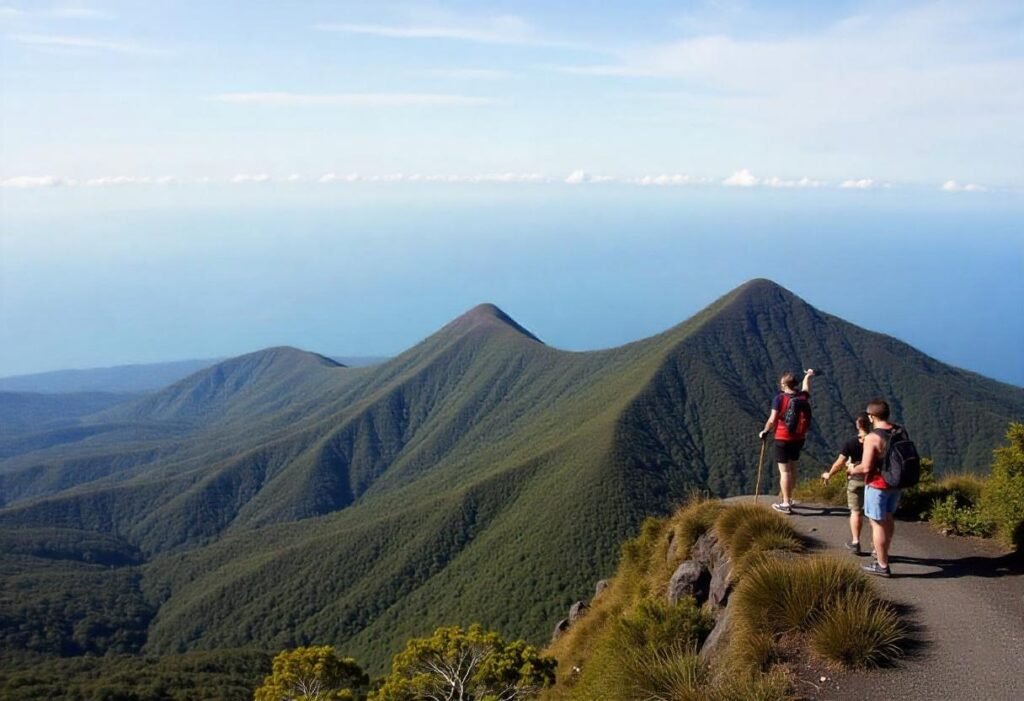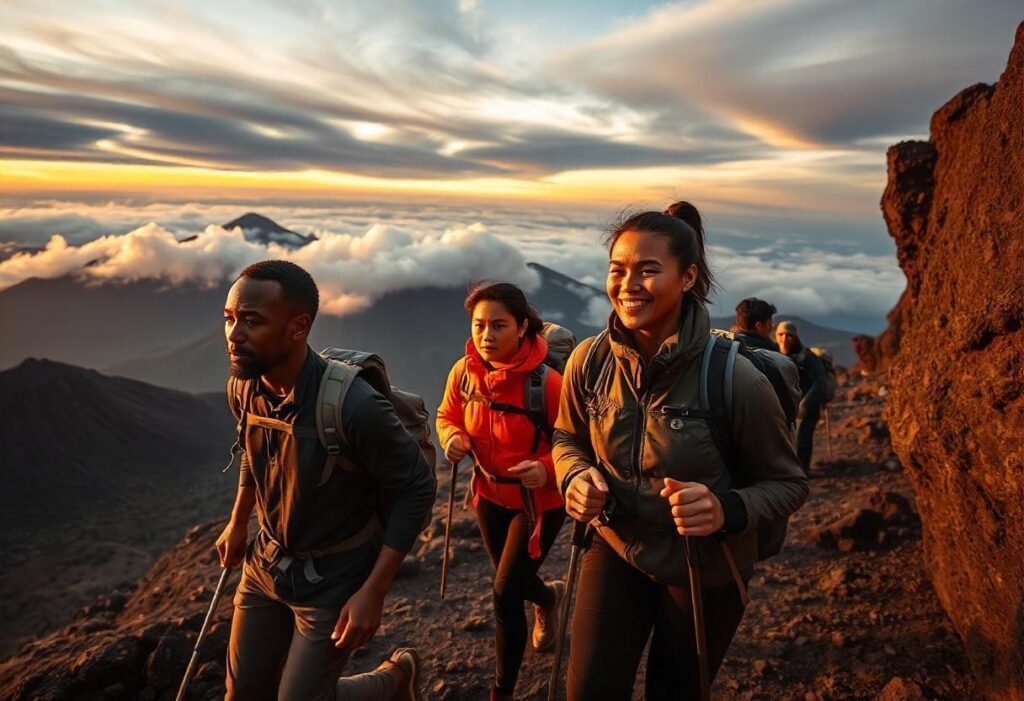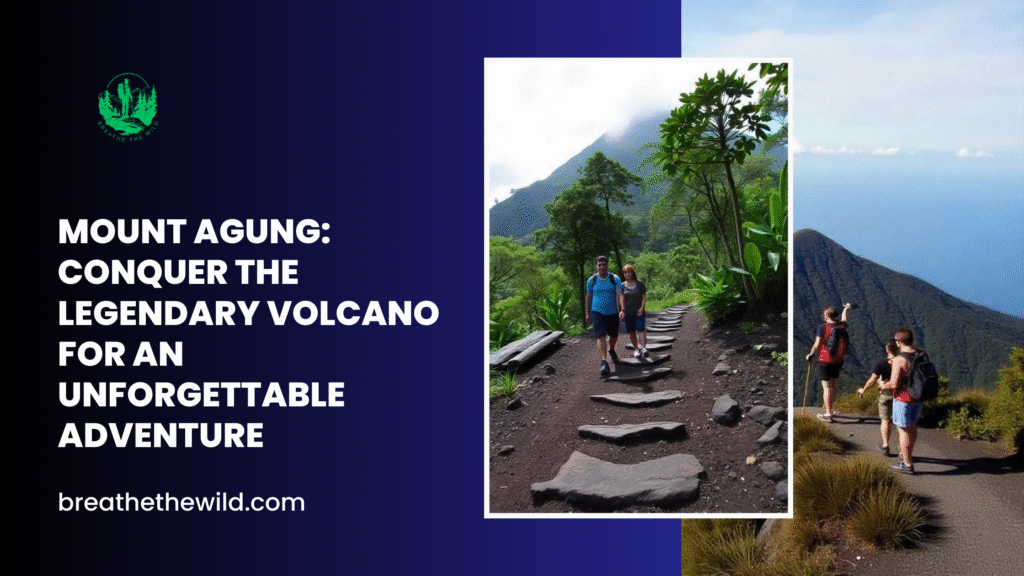Table of Contents
Introduction: Why Mount Agung Should Be Your Next Big Adventure

Not only is it the highest mountain in Bali, the peak of which is located 3031 meters above the ground, but it is also the most sacred and famous place. It is a spiritual volcano to the Balinese and offers the climbers one of the memorable hiking adventures for adventure seekers of the world. A climb to the top of the volcano known as Mount Agung is certainly not just a physical climb but it is an adventure into tropical rain forests, volcanic wilderness and an opportunity to experience the prime-val culture surmounting all your efforts with dramatic 360 degree panoramic views that not only fills the vastness of the entire island of Bali but also certainly extends beyond.
Whether it is an expert hiker or an adventurous tourist who wishes to put his/her limits to the test, Mount Agung is replete with nature, cultural enrichment, and adventure that can get your adrenaline kicking up. It could be getting up in the early mornings and having to climb the muddy hillside mountains, which are full of falls during the summit in search of a great sunrise between the mountains, or it is an experience of victory over the demons and gods and the ghosts, a time spent on Mount Agung is mesmerizing and gratifying.
Provided that you are interested in taking a rather demanding (both physically and spiritually) yet incredibly scenic hike, Mount Agung should definitely be at the top of your priorities list in case of Bali. This guide will teach you how to pack, move, and have fun on the most legendary climb in front of you.
Where Is Mount Agung? Location and How to Get There
Bali is an Indonesian island that is located in the eastern part of the Island and has the highest volcano in Bali, named, o Bali that attains a height of 3,031 meters (9,944 feet). It is situated close to some small villages, which often provide a starting point for a hike, such as Besakih, Rendan, and Candidasa. It was convenient for the villages to ascend the mountain, which can be attributed to the ease of accessibility of the mountains to the base camps, as well as the basic needs of hikers.
The major touring destinations in the networks of the Bali area will lead visitors to Mount Agung, namely, Ubud, and Candidasa. This is around 2-3 hours (traffic dependent) of driving east along the highway, which leads out of Ubud or Denpasar. The majority of the travelers use the services of personal drivers or rent shuttles to visit the trailhead, or they can rent scooters to travel. Individuals arriving in Candidasa can access the volcano more easily and quickly, as they are nearer than those available in Amed.
The property camps like Besakih camps provide resting spots and origins of local guides, who are highly promoted in terms of safety and integration of culture. Picturesque countryside and crowded villages that are typically Balinese can be reached in a car or on motorbikes, and even the organized tours towards Mount Agung, the road towards which will take various paths and will be one of the introductions to the following hiking adventure.
Understanding the Mount Agung Trek: Routes, Difficulty, and Preparation
The famous mountain, Mount Agung, has two common approach trails, namely the Pura Besakih Trail and the Pasar Agung Trail. The Pura Besakih route begins near the largest and holiest temple of the island, Besakih Temple, which is also known as the Mother Temple of Bali. This is the longer and more spiritual of the roads and passes through sacred and thick woods. Pasar Agung trail starts a good deal closer to the village of Pasar Agung, but is commonly thought to be slightly shorter, yet just as steep and demanding physically.
The two trails rise to approximately 3000 meters, and the terrain is steep and rocky, comprising volcanic rocks and rocky steps, and steep paths. Hike length would depend on your route, but typically would be 6 to 8 kilometers each way, with an estimated 6 to 10 hours of hiking, depending on fitness/speed.
This makes it advisable to only those who are both physically fit and have done some form of hiking due to the altitude of this mountain, as well as the rugged conditions, and early rise to make sure that one gets to see the sun rise on a mountain, which is usually early, and this will in most cases be around midnight. The novices are advised to train through cardiovascular exercise and acclimatize in areas that are available. It is highly recommended to have a local guide in order to reach everywhere, navigate, and in order to be informed about the culture.
The Spiritual and Cultural Significance of Mount Agung

Mount Agung lies at the heart of the spirituality of Balinese Hinduism and local traditions. It is the seat of Balinese cosmology, the destination where the gods inhabit, and which is the center of the universe (kala). This mountain is well intertwined with Besakih Temple, as this temple is one that is placed on the slopes of the mountain, and it is regarded as the central location of pilgrimage. There are also many sacred rituals and festivals that are conducted on a yearly basis to honour Mount Agung as well as to pray in order to make the island a rich place.
Hikers regard the status of Mount Agung as a sacred one, and by valuing this type of knowledge, they receive enrichment. The paths are away in areas of worship where one can witness the offerings and rituals, and visitors are supposed to be good and quiet, litter-free. Many climbers believe that the physical aspect is a valuable experience because of the spiritual part, and the mountaineering experience is more satisfying and wholesome both psychologically and physically.
Check Out: Mount Kelimutu: Unforgettable Hikes to the Enchanted Tri-Colored Lakes.
What to Expect on the Trail: A Step-by-Step Hiking Experience
The Mount Agung trek usually begins at the very early mobilization time of the day, normally midnight or right before dawn, to reach the top and watch the sunrise. To start, at dark we require an excellent Headlamp and to dress against lower temperatures, which are quite cold compared to the usual tropical heat of Bali.
The trail takes you through numerous types of scenery when you are higher up. The area at its bottom is rich, lush, and covered in tropical rainforests where you may observe the wildlife of the local area and the sounds of the jungle. The higher one ascends, the more the volcanic rocks and ash are consequently indicating that the mountain is volcanic. Inhere places it is steep, and in other places it narrows, and so then requires delicate treading and a gradual pace.
Also, one should not hurry, as it is likely to make you exhausted and incapable of maintaining the altitude gained. Do not forget to consume plenty of water and take short breaks in case they are needed. Can veterans not succumb to altitude as well hence listening to the body and adjusting according to the change. Their active nature is prone to dehydration, and beverage as much water as possible because of the temperature. The scenery contrast also supplies all types of photographic contexts and the reality of hiking up the top mountain of Bali.
Summit Rewards: Sunrise and Panoramic Views from Bali’s Highest Peak
This trek to Mount Agung is justified as one climbs up to the top of the mountain to enjoy one of the magnificent glimpses in Bali, and that of seeing the sun rise over the island and beyond. Prior to the sun finally rising, it paints the sky with shades of orange, pink, and purple and shadows the volcanic mountains, lush valleys, and islands whose appearance it has provided as the sun rises, Lombok and Java being among them.
The scenery is amazing- 360 degrees, and the sights it provides are unmatched and worth the existence of the climb. Photographers will have plenty of dramatic shots available; there is the glowing rim of the crater itself, and there are the silhouettes of the other climbers who have just reached their destination. These sunbeams also balance the harsh scenery around the volcano, making early morning the ideal time to be captured taking memorable photos.
Essential Gear and Packing List for Hiking Mount Agung
Having the right clothes and other essentials when heading out to climb needs planning to ensure that it is safe and comfortable. First of all, you should do some work with your hiking boots, which will keep your ankle and perform well in rocky sections. Wear something removable or addable such that you do not have to change clothes when the weather changes, such as cool mornings and hot afternoons.
The early start in the middle of the night, a headlamp is mandatory, so you need loads of water and energy-rich snacks. Optional and recommended includes: trekking poles to negotiate the steep sections of the track or the loose trail; gloves/rocky sections; a rain jacket in the event of sudden downpour, and a camera to capture memoirs.
Safety Tips and Regulations: How to Hike Responsibly on Mount Agung
Being a live volcano, it is important to possess knowledge regarding volcanic activities as far as Mount Agung is concerned. Locally, please use official channels and check local warnings before you go, and check the state of the mountain at the time you want to hike. Climbing may require regulation climbing permit, which in other words means you have to make sure you have proper authorization.
Just to be on the safe side, it is best to hire a local guide; driving at night is hardly permitted, a certified guide would be capable of guiding you in and around in a safe way, and he would also help you appreciate the trip by giving cultural and environmental color. Leaders are familiar with the land and saving manoeuvres.
Due to this altitude, you might have problems with altitude sickness, so take due diligence to acclimatize, climbing slowly and be aware of symptoms, such as dizziness or nausea. The weather of Mount Agung is quite erratic and can change at any given moment; therefore, expect to get wet, cold, and windy, and never risk your safety even in your possible end destination.

Conclusion
It is not an ordinary adventure climb as the mountain Agung has more to offer than one could chase after it in the name of fun and enjoyment; rather, it is an adventure of all aspects, including physical, natural, and cultural. Watching the sunrise and the sea of clouds over islands and beyond the tallest mountain in Bali creates an image that never forget. The road makes you test your strength and enjoy some of the most magnificent panoramic sceneries of lush tropical forests, arid and arable land, fields of ashes of volcanic fields, and the way to the volcano itself.
The process of this epic climb will surely be worth it, provided that one makes the most out of it. With the right gear, facilitated assistance, and the knowledge of the power of the mountain together with its spiritual context, not only will you be capable of undertaking this kind of ride to experience the thrill of adventure, but you will gain a more intimate acquaintance with the spiritual face of Bali as well. Being a veteran trekker or a highly inspired surveyor, Mount Agung is one experience you cannot forget, and thus have a chance to identify with nature, the culture, and even yourself.
For more info: Click Here.
FAQs
1. How hard is it to trek in Mount Agung?
This hike can be said to be a challenging one as it is characterized by steep terrain, elevation gain, among other factors, and variable weather patterns. It is easier for those mildly and well-fit hikers. The safety course would be highly recommended, as well as navigation through a local presentive.
2. Is it allowed to visit Mount Agung?
Yes, depending on laws in effect at the time and volcanism, perhaps it would need a permit. Hiking is never a good idea without checking in with local authorities or your guide service.
3. When to hike only in Mount Agung?
The safest and transparent climate is during the dry season, that is between the months of April to October. It is highly imperative to get up in the morning to beat it to the peak to watch the sunrise, and before the weather changes, as compared to the afternoon.



